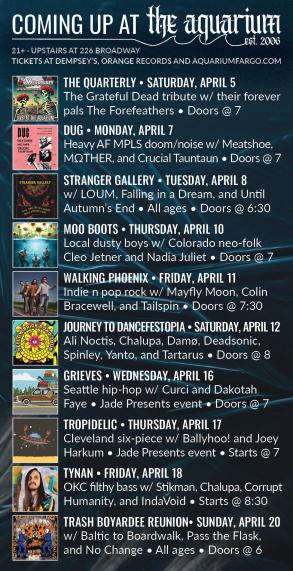Last Word | April 21st, 2022
By Curt Stofferahn
https://drcinfo.org
Recent news about proposed economic development strategies in North Dakota had me thinking that the founders of the Nonpartisan League must be turning in their graves.
The League grew out of North Dakota farmers’ feelings of exploitation at the hands of out-of-state corporations. When the League gained control of the legislature, it created institutions to deal with that exploitation and to give North Dakota farmers economic independence from these. But now, the governor, cities, counties, and economic development corporations would trade away what remains of the state’s sovereignty to out-of-state corporations.
Perhaps we need to remind ourselves of the circumstances that gave birth to the League. At the turn of the last century, North Dakota was largely an internal colony exploited by the railroads, grain traders, millers and bankers based in the Twin Cities. As Michael Lansing wrote in “Insurgent Democracy: The Nonpartisan League in North American Politics”:
In their efforts to exploit the soil, farmers found themselves exploited. The dependence they felt took on structural forms. Minneapolis millers purchased and milled most of their wheat, and Minneapolis companies often owned their mortgages. St. Paul was the region's primary rail center, and railroad companies there set the costs for transporting wheat from nearby small towns. The Twin Cities played a disproportionate role in North Dakota’s economic and cultural life. Living in these cities’ hinterlands encouraged farmers to believe that urbanities gained the real prosperity earned through farmers’ sweat and sacrifice. Others controlled their destiny – and their profits. The power that they brought into the world flowed to someone else.
Arthur Townley and Frank Wood drew up the political platform of the Nonpartisan League at a meeting of the American Society of Equity in 1914, that addressed many of the farmers’ concerns of economic exploitation. Their platform proposed that the state claim control over its own economic destiny by creating its own bank, warehouses, and factories. The League gained control of both houses of the state legislature in 1918, allowing it to enact most of its platform. To gain control over the state’s own economic destiny, the legislature established two state-owned enterprises: the North Dakota Mill and Elevator and the Bank of North Dakota.
When the League was organized, North Dakota had a mono-crop economy based upon wheat production, but out-of-state grain dealers suppressed prices, out-of-state suppliers increased input prices, and commercial lenders in the Twin Cities and New York set high-interest rates. All this made it difficult to make a living as a farmer.
League legislators created the Bank of North Dakota to address market failures associated with monopoly power among financial institutions centered in the Twin Cities. Farmers had inadequate access to credit, and the BND was created to remedy their limited access.
At the same time, flour mills and the grain exchange in Minneapolis were the primary markets for wheat from the state’s elevators and farmers. After deducting freight costs from Minneapolis market prices, the state’s farmers received a very low price for their wheat. Nonpartisan League legislators established the North Dakota Mill as a way of bypassing what many area wheat farmers considered unfair business practices on the part of the railroads and milling facilities in Minneapolis.
Today, both institutions remain successful ventures with profits above operating expenses and investments dedicated to the state’s general revenue fund. In 2020, the Bank of North Dakota reported a profit of $141.2 million. The State Mill and Elevator reported a profit of $13.5 million, shipped a record 15.8 million hundredweight of product, and flour shipments were 440,000 hundredweight. The State Bank provides low-interest college student loans as well as participating or guaranteed loans for beginning and established farmers, farm disaster expenses, agricultural diversification enterprises, farm operations, family farmers, and economic development ventures.
So why do I recall the history of the state’s determined effort to promote its own sovereignty and economic independence from outside interests? Because recent economic development proposals championed by Governor Burgum seek to subvert the state’s economic independence and sovereignty by making it a vassal of outside interests. These projects include the Summit Carbon Solutions Pipeline, corporate value-added agricultural ventures in the form of a Japanese soybean crush facility in Casselton, a Chinese corn wet-milling facility near Grand Forks, and a Bitcoin mine in Williston owned by a former felon.
The Summit Carbon Solutions Pipeline would turn west-central North Dakota into a carbon capture experiment zone that would benefit California and out-of-state shareholders. Just as in other economic development ventures, North Dakota would become a resource colony/sacrifice zone for out-of-state interests. This pipeline would take CO2 emissions from 33 ethanol plants from throughout the Midwest and pipe them to North Dakota coal country in hopes that it can be stored there permanently or perhaps be used in the future for enhanced oil recovery.
There has never been a successful project of this kind conducted; several CO2-capture plants for coal and oil and gas have failed throughout the world from Texas to Australia, leaving taxpayers with the sunk costs of public subsidies to build them or the costs to reclaim them.
Additionally, the economics of the pipeline rely on the California carbon markets as well as the federal 45Q tax credits that will pay companies $50 per ton to store the carbon. Summit believes it can cash flow approximately $1 billion per year alone from tax credits and the California carbon market. In addition to the technical problems and the complex government subsidies, the pipeline will have to receive enough easements to construct it or otherwise use eminent domain.
As you can imagine, landowners along the proposed route in North Dakota have been contacting the Dakota Resource Council (DRC). They are angry and frustrated with the proposed project. They do not want it to cross their land due to the risks and liabilities involved and because the project is only in the interest of California and the pipeline investors who will become rich from federal tax credits.
Although many North Dakotans support farmer-owned and operated value-added agriculture ventures, they don’t necessarily support the two projects proposed by the governor and the Commerce Department. They have attracted two foreign companies, a Chinese-owned corn milling facility in Grand Forks, and a Japanese-owned soy crush facility in Casselton. These could impact both communities. They are an industrial development next to residential areas, but they would also financially harm many of the local grain elevators that depend on area farmers to supply them, as well as the small towns that depend on the elevators as an economic foundation. If these two facilities were to be developed, farmers might abandon their local elevators in favor of the foreign-owned soy and corn facilities.
The most likely markets for these processed grains would be large-scale confined animal feeding operations (CAFOs). From experience in Iowa and South Dakota, we know that CAFOs follow corn and soy processing facilities. If that were to happen, it would result in CAFOs becoming entrenched in North Dakota, ruining the quality-of-life of adjacent rural communities because of CAFO-associated air and water pollution. There are many angry North Dakotans opposing both of these projects, many of whom are DRC members, and we are organizing them.
Perhaps the most bizarre economic development strategy that the governor has embraced is the Bitcoin Mine in Williston. It involves a convicted felon (Rick Tabish) with enough in his checkered past to make Martin Scorsese drool. According to McFeely (The Forum, Jan. 27, 2022), the plot elements involve alleged murder, sex, drugs, money, a casino boss, the mob, Las Vegas, a stripper, buried treasure, and bricks of cash. In fact, it has been the subject of six books, one movie, and a “48 Hours” segment. His murder conviction was overturned on appeal, but the convictions of burglary, conspiracy, extortion, and other charges stuck.
If the picture of the governor with this mobster character who proposed this crypto mining proposal wasn’t enough to make you cringe, what makes this proposal even more interesting is that, according to Reuters (Dec. 8, 2020), Latin American crime cartels have turned to cryptocurrencies for money laundering.
It appears that the purpose of this entire proposal is to guarantee a long- term market for lignite-generated electricity from Basin Electric Power Cooperative if it makes the needed capital investments to supply the bitcoin mine with power. If for whatever reason this bitcoin mining operation should fail, Basin Electric could be left holding the bag for its capital investments, and it would have to pass along the costs to its member cooperatives.
As I mentioned in the beginning of this rather long message, the Nonpartisan League struggled against exploitation of farmers by outside economic interests and built state-owned enterprises to give farmers some economic independence as well as to give North Dakota some economic sovereignty.
The struggle against dependence and economic disadvantage are two of the six themes (the other four themes are remoteness, radicalism, the Too-Much Mistake, and adjustment) of the state’s experience according to Elwyn Robinson’s “History of North Dakota.”
This struggle didn’t end with the Nonpartisan League; it has been repeated throughout the state’s history, and that struggle can be found within the history of the cooperative movement and the farm movement. It’s just ironic that today, when we would think we’d see organizations that had their birth in struggles against that external exploitation, especially the political party that claims the title and historical remnant of that struggle, they are doing nothing to resist these most recent examples of egregious exploitation by outside corporations.
Dakota Resource Council is involved in these struggles, however, and it appears to be the only organization in the state that is carrying on the tradition of the Nonpartisan League.
_______________________
Editor’s note: Curt Stofferahn is the Chairperson of the Dakota Resource Council.
February 28th 2025
February 21st 2025
January 17th 2025
December 2nd 2024
November 23rd 2024

__293px-wide.jpg)
__293px-wide.jpg)

__293px-wide.jpg)


By Josette Ciceronunapologeticallyanxiousme@gmail.com What does it mean to truly live in a community —or should I say, among community? It’s a question I have been wrestling with since I moved to Fargo-Moorhead in February 2022.…